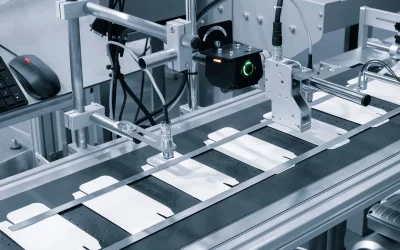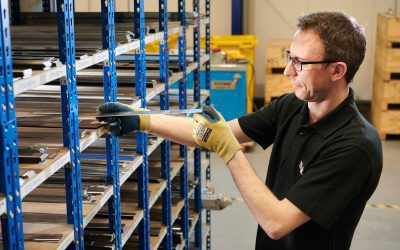Micro vs macro: a view on costs
Before we delve into the details as to how industrial knives can reduce your costs, we wanted to make a differentiation between micro and macro costs.
If you’re attempting to reduce the costs associated with running your manufacturing business in 2023, then you’ll want to look at both macro costs (that is, costs that impact your entire business such as energy and utilities), and micro costs (such as industrial knives that affect particular parts or segments of your business).
Below, we’ve detailed a mix of micro and macro actions you can take to reduce your business’ running costs.
Audit your facility
The first action you should take should be to audit your manufacturing or processing facility.
Consider all of your core operating costs – ideally over a set period (these can include macro and micro costs).
Look at core costs such as rent, utilities, building and plant/equipment maintenance, labour costs, administrative costs and the servicing of debts. You should also factor in smaller ongoing costs such as knife replacement.
You should also try to forecast how these costs are likely to change over the coming 12 months. For example, are you expecting the cost of your raw materials to rise significantly? Are you expecting certain costs to decline?
From there, you should be able to identify areas where savings can be achieved. Depending on what you find, the following actions could be the most effective ways of reducing costs.
Reduce the wastage of materials
No matter what you produce, it’s likely that the cost of your raw materials has increased significantly over the past 12 months.
As a result, any materials that are wasted will be a big expense for your business.
Take food processing for example. Here in the UK, the food processing industry tolerates around 5% of raw materials being wasted during the production process.
This waste occurs in a number of ways – most notably during machinery stoppages and machinery start-ups.
For example, on an assembly line producing meals, there may be several machines operating at once (producing different parts of the meal). If one of those machines stops – for example, if a blade breaks – then the operators will typically allow the system to keep running, directing the food to waste bins whilst the broken machine is fixed.
If you can prevent machines from breaking or developing faults in the first place, then you can reduce the amount of wasted materials in your operations – saving you money in the long run.
The same goes for machine start up. Volumes on many packaged items are normally based on the normal speed of production. As machinery normally takes a few minutes to get up to speed, the first batch of packages through the machine will have to be discarded, as they won’t be of sufficient volume. (It’s for this reason that operators are loath to stop systems).
Reduce energy costs
One of the biggest costs afflicting manufacturers right now is energy.
With both electricity and gas prices being exceptionally high, anything that reduces energy consumption within your facility will save you significant sums of money.
The type of actions you can take to reduce energy consumption include the installation of efficient LED lighting, improved insulation, and the implementation of energy-saving best practices e.g. switching machinery off when not in use.
Another major source of energy savings is your machinery and plant. By following tribology best practices – such as ensuring the proper lubrication of machinery and bearings, and minimising wear and friction – you can save significant amounts of energy.
As you can imagine, using high-quality precision-machined industrial knives will also ensure the efficient operation of your machinery
Reduce quality issues
Quality issues can be a major source of costs. Although individual quality issues may be small, cumulatively they can add up to significant sums.
To provide a practical example, think of meat processing operations. If the blades used in meat processing machinery are not of sufficient quality, they can produce poor-quality cuts.
As the appearance of meat products is an important buying factor for consumers, poor quality cuts can result in your meat being rejected by supermarkets or other buyers. Should this happen in large enough volumes, you’ll find yourself facing significant financial losses.
So, it’s vital that you reduce quality issues by choosing machinery and machinery knives that produce high-quality cuts time after time.
Invest in quality
Whilst it may be tempting to cut costs by not investing in high-quality machinery and blades, you’ll find – as the points above make clear – that it’s a false economy.
As we have seen, investing in the best industrial knives can save you money across a broad range of areas. These include reducing wastage, increasing energy efficiency, and reducing quality issues.
High-quality machine blades – whether they are for processing foodstuffs or cutting packaging materials – will last for longer, reduce downtime, provide better quality cuts, and ultimately have a cascading impact that reduces your overall costs.
Buy the best; buy MRMK machine blades
If you want to meet the challenges of 2023 head-on, and cut costs across your business, then invest in the very best industrial knives from MRMK.
With hundreds of satisfied customers across the world, MRMK is trusted by many of the biggest names in the food processing, pharmaceuticals, FMCG and other industries to provide their machine blades.
Speak to the MRMK team about your industrial knife requirements now
For more machine blade buying guides, advice and information, read the MRMK News and Insights Hub…
The Food Packaging Trends to Watch in 2023 | A Practical Guide to Machine Knives and Blade Material Selection | Why Leading Brands Choose MRMK to Manufacture Their Machine Knives


 +44 (0) 1909 519815
+44 (0) 1909 519815 


